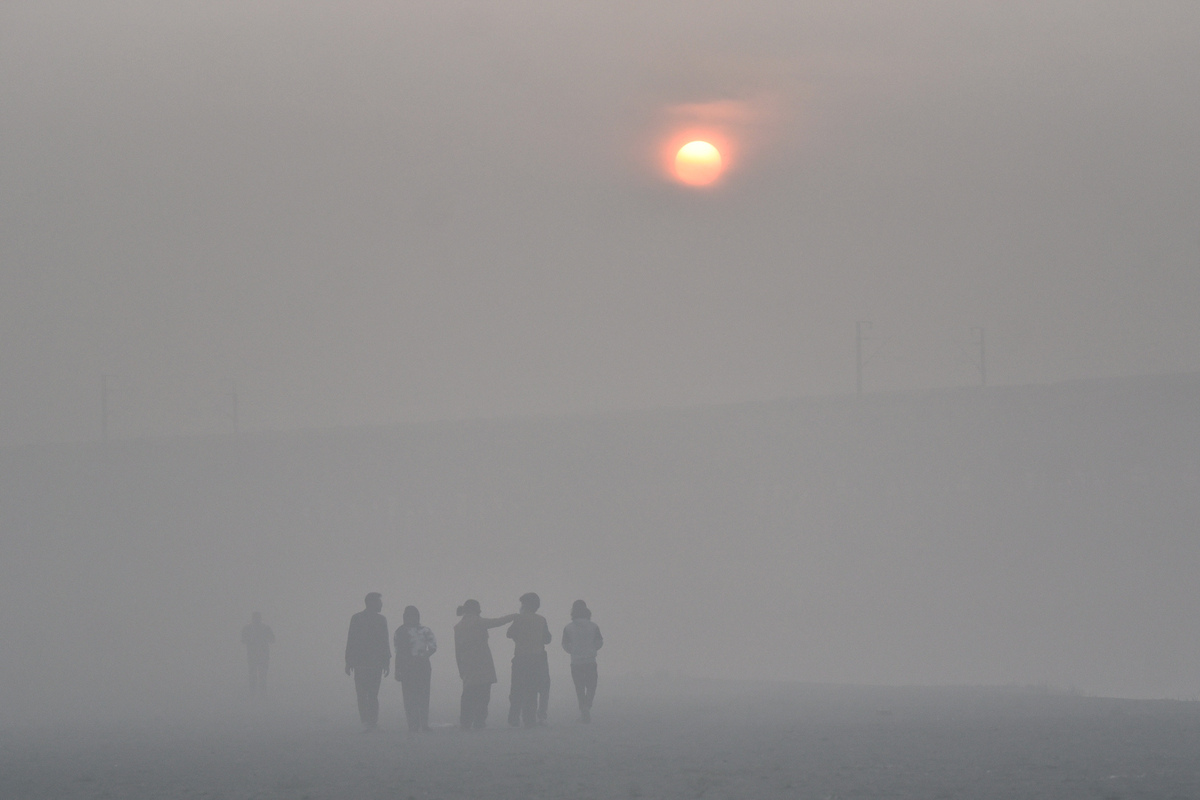Delhi PWD Minister inspects development projects
During the inspection, Minister Pravesh Verma took stock of three important projects. The first is from Bhoro Marg to Sarai Kale Khan where road strengthening work is going on till the ring road.
All eyes on IMD’s forecast for light rain on November 27

Representation image (Photo:ANI)
A hazy sky and toxic air continued to bother the residents of national capital on Saturday as people struggled to breathe easy amid the ‘severe’ level of pollution.
The city’s air quality on Saturday morning remained under ‘severe’ level.
Advertisement
On Friday, the average AQI had stepped into ‘severe’ category with a reading of 415, according to the Central Pollution Control Board (CPCB).
Advertisement
Delhi has witnessed an increase in AQI level after a little improvement which was observed last Saturday.
For now, all eyes are on the Met department’s forecast for November 27, which mentions of light rain or drizzle, which is likely to bring in a little respite from the bad air situation.
It is also said that wind speed may improve around the same time that could help improve the situation.
Notably, earlier in this month, a day before Diwali, rain had improved the air situation in the capital and its surroundings.
As per experts, rain and increased wind speed helps disperse pollutants that settle in the air at lower levels.
Meanwhile, people are witnessing symptoms such as burning eyes, headache and difficulty in breathing due to the level of pollutants above safe limits in the city’s air.
Medical experts have been suggesting people, especially the elderly, children and those with existing heart and lung conditions to avoid venturing out and have also advised people to refrain from outdoor activities amid increased air pollution levels.
According to the CPCB, primary pollutants responsible for making the air unfit include PM 2.5 and PM 10.
PM 2.5 are the micro particles that care capable of penetrating deep in to the respiratory system, likely triggering health issues.
Meanwhile, as told by the Delhi Environment Minister on Friday, despite reduced farm fires the pollution witnessed an increase and factors responsible for the same included biomass burning vehicular emissions.
Apparently these two factors contributed majorly towards the city’s air pollution and government is enforcing all measures to curb the same as per the Graded Response Action Plan (GRAP) Stage-III, the minister had said while speaking to a news agency on the issue of air pollution situation in the national capital.
Faridabad, a city adjoining Delhi, also recorded ‘severe’ levels of air quality on Saturday, while other NCR cities like Ghaziabad, Gurugram, Noida and Greater Noida reeled under AQI falling in ‘very poor’ category.
Meanwhile, the AQI levels ranging between 0-50 falls under the ‘good’ category, 101-200 is considered ‘satisfactory,’ while 201-300 marks the ‘poor’ category, 301-400 very poor, 401-450 ‘severe’ and above 450 is the alarming ‘severe plus’ level.
Advertisement